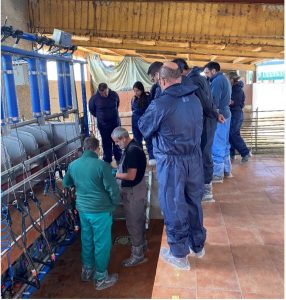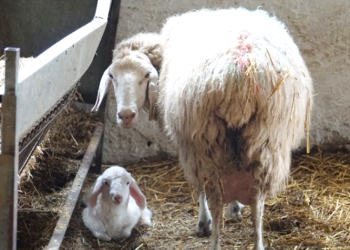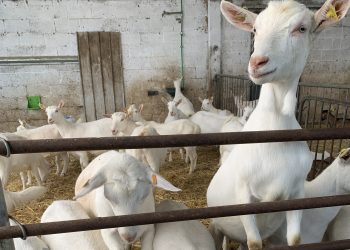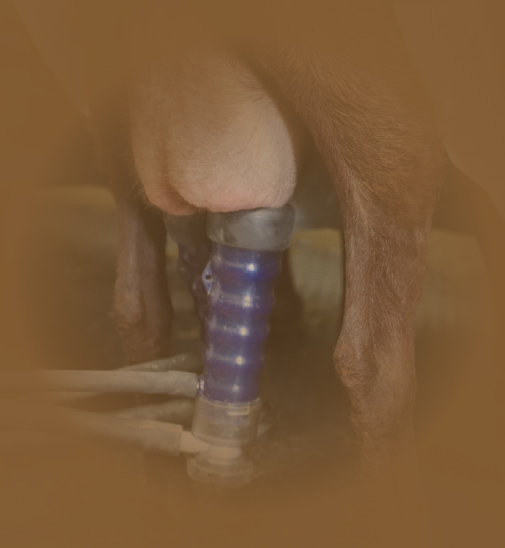What problems do you usually encounter most frequently with milking machines?
One of the determining factors is the suction level. Milking is usually carried out with low suction levels, which promotes slipping of the teat cups, which can cause mammary infections.
Another very important point is the state of maintenance of the equipment, especially the teat liners. We should change them when the manufacturer recommends, because otherwise the quality of milking decreases. In addition, teat cups can be a source of bacteria.
What are the most common problems or errors related to the milking routine?
First of all, I think overmilking is quite common, especially if there are no automatic de-milkers. Then there are the bad habits that accumulate, such as rushing things, not cutting off the suction before removing them…
Other things that can be done are to establish a milking order. For example, on large farms, you can make a batch of first primiparous animals and a batch of chronic animals. If you have identified chronic animals through milk control or otherwise through unbalanced udders, and always have a hospital at the end.
Chronically ill animals must be removed because they are the source of infection for healthy animals.
There are other strategies to reduce the risk of transmission, such as disinfecting teats after milking, and disinfection of teat liners between flocks. What you can also do, if you have identified chronically affected animals, but you cannot separate them because the farm’s structure does not permit, is to mark them and disinfect the teat cups especially for these animals.

And regarding drying, what recommendations would you give us?
We usually recommend respecting the 60-day dry period. I am not a big fan of randomly doing or skipping milkings. What I would do is, about 75 days before the expected delivery date, start milking only once a day. Although animals that produce less than a litre of milk a day can be dried abruptly, and those that do not, you can milk them for 10 days at one milking and then dry them.
Selective therapy of infected animals, an antibiotic, can be implemented if necessary, but only for animals that need it, not for healthy animals.
What can we do during a farm visit to assess udder health? Can you explain what you usually do?
As we said, infections occur during milking. Basically what I do is go to the milkings so I am there observing all the risk factors. On the one hand, how they are milked, and I check to see if there is over-milking, and I look at the condition of the teat liners. I also evaluate the animals’ hygiene, if they have unbalanced teats and udders. And I’ll see if they do post-dipping.
I also take this opportunity to do a dynamic review of the milking equipment.
What advice would you give to a farmer to control mastitis?
First of all, an environmental control. Animals must enter the milking room with clean and dry udders. That’s basically upkeep of the bedding.
Second, animals must be milked in a way that minimises the risk of transmission by establishing milking batches based on udder health and applying milking strategies. In farms which do not use a cell count, the California test is a good way to identify chronic animals and remove them. And then proper maintenance of the machine, doing at least one check per year to evaluate the gaps and pulsation.




